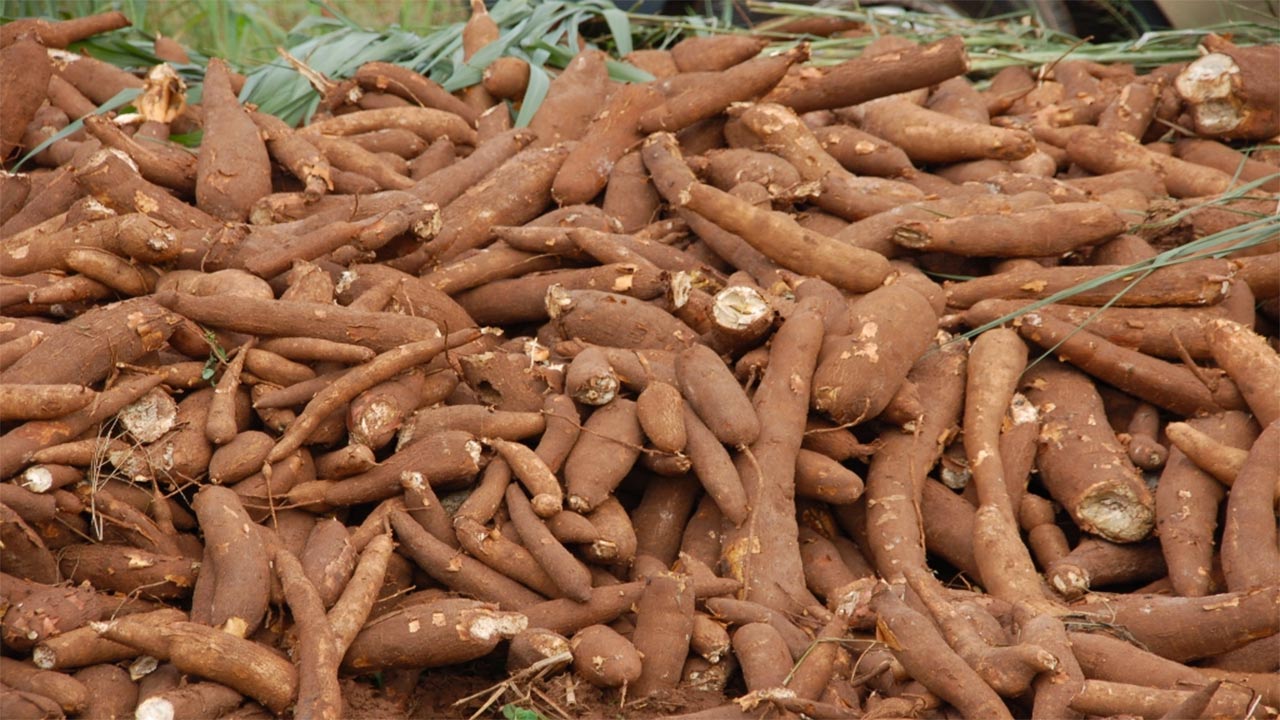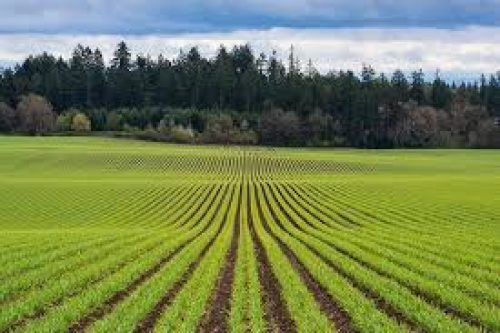Grown on about seven million hectares, cassava is a major staple in Nigeria, which has transited from a food security crop to a cash crop. It has well-established multiplication and processing techniques for food products and cattle feed.
The root crop is a source of commercial animal feed, fiber for paper and textile manufacturers, and starch for food and pharmaceutical industries.
On a daily basis, breeders are developing new cassava varieties, which are being multiplied and disseminated to farmers. A Report has it that there are more than 40 cassava varieties in use.
However, the more new varieties are developed, the more the fear about their safety. Several questions asked by Nigerians on the safety of the cassava types for human consumption have remained unanswered.
In an exclusive interview with The Guardian, the Managing Director, EagleGrip Farms, Olabanji Agboola, disclosed that there are three basic species-Tropical Manihot Esculenta (TME), Tropical Manihot Species (TMS) and NR, which are foundation for other varieties, but the widely planted are TMS and TME.
According to him, the TME has two types-TME 419 and TME 7; TMS has 98/0505, 98/0581, 1011412, 1011371, 1011368, and 30572; while NR has NR 8082.
To identify the various species, Agboola said TME species are always tall-about 7ft and straight out, dark brown stem, green petiole, fully expanded leaf and the central leaf in Lanceolate, adding that in recent time the demand for TME is higher.
He said the TMS is not always tall, but comes with many branches, right from about 45cm soil level. “It has silver green stem, green purple petiole, light brown outer root skin, green purple fully expanded leaf, and elliptic central leaf.
Agboola, however, noted that in whatever ways it is looked at, cassava is a poisonous tuber when the prussic acid is still trapped within, because consuming it at that point will deposit cyanide into the body chemistry, but added that despite that all cassava species are fit for human consumption.
“This brings to mind the two classes of cassava for layman analysis; sweet and bitter. Several varieties of cassava have been identified and grouped into bitter and sweet depending on the quantity of linamarin in the tuber.
“The sweet or bitter cassava can be got from both TME or TMS because many improved varieties have been multiplied over the years by rural farmers, so it will be systematically wrong to attribute sweetness to a variant. However, both have to be dewatered, fermented and then processed in whatever medium to be suitable for human consumption. Aside from this, the pulp has to be dewatered to a certain degree for livestock feed supplement or formulation.
He stressed that cassava contains two cyanogenic glucosides, linamarin and a small amount of lotaustralin, which are catalytically hydrolyzed to release toxic hydrogen cyanide (HCN) when consumed fresh.
“It is totally false that some varieties are not edible no matter the process it is subjected to. What is correct is that, cassava has to be properly dewatered to reduce the amount of cyanide, then it will be suitable for consumption. There are many derivatives from cassava such as: High Quality Cassava Flour (HQCF), garri, fufu, cassava flour, cassava chips (horse feed), and starch, among others. The end often justifies the processing method, steps and even the mechanism to put into use. For this purpose, let us use garri as a case study for it is the common derivative in these climes. There are two operational standards for garri processing: yellow and white.
“For the yellow processing, the raw materials (cassava) supplied must be harvested and peeled the same day (if it stays longer, it becomes fermented and defeats the production purpose). Stage two-the cassava mash is filled into a sack and subjected to press. This is the means of expelling water from the mash. At about 20mct, the frying begins, which is about 24 to 36 hours later. At the frying stage, the moisture content must have been reduced to 10 to 13 per cent moisture content (this also depends on the class of yellow garri for such batch).”
For white garri, he said after the harvest, the raw materials are left till the next day, to allow the microbial process to begin. “Stage one, the peels and grating will be done same day, stage two, the mash shall be kept in a vat for further fermentation process, at this point, the cyanide base becomes broken down. This mash could last for three to six days before it is finally pressed (this is when to determine the sourness taste of the garri granular).
“Stage three, the mash is bagged and subject to press, within hours it will be dewatered. Then the pulverisation, the act of breaking the caked mash into powdery form begins. Stage four-the frying at about 80°c and gradually to 180°c will bring the content to about six to eight per cent moisture content. At this stage, the output is fit for consumption and long time storage (at six per cent, the garri will last 16 month shelf life)
Agboola advised that to make cassava safe for human consumption, the method of processing must be adhered to. “It is purely suicidal and criminal to first sun dry pulverised mash before frying. It should be noted that TME 419 is the best for garri processing and equally HQCF because it is low in cyanide.”
Moreover, he added that for animals, the peels of the cassava roots can be used as animal feed. “For that to be achieved without side effects, it should undergo the following processes: the cassava peels have to be carefully sorted out, washed thoroughly, then grated twice. Afterwards, the pulp should be stuffed in a woven sack and subjected to press. This process will dewater the mash and reduce the cyanide. Then, let the content dry.
“Thereafter, the cake should be grater again for pulverising. The mash should then be sun dried till about 10-12 per cent moisture content is attained. Now, the cassava peel cake is ready to be consumed by the stock (goat, pig, ram, cow, chicken, Turkey, Horse, and others).
He stressed that due to the energy constituent of this feed, it can be fortified with amino acid: for 1,000kg (1ton) of pulverised cassava peel cake, with the following formula: Mentholine-500grm; Lysin-250grm; Premix-1kg (depending on the class of animal it is meant for); Salt-250grm; Soya meal or GNC-50kg; Enzyme-0.05; and Binder-0.05.





